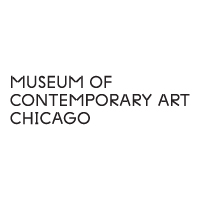Tokyo: Dinh Q. Lê
By David Frazier
Dinh Q. Lê
Memory for Tomorrow
Mori Art Museum
TOKYO

DINH Q. L
Dinh Q. Lê, one of Vietnam's best known artists and the subject of a retrospective at Tokyo's Mori Art Museum, has over the last two decades created an insistent, moral critique of America's version of the Vietnam War. He has attacked the myth of the white hero: the soldier or war correspondent who descends into the heart of international-police-action darkness and ultimately emerges from the hell of Vietnamese otherness. In this approach, Lê follows in the footsteps of Edward Said (1935–2003), the postcolonial deconstructionist who insisted that history is a construct in which, through a close reading of its mainstream narrative, one can find at its core traces of an ugly, buried colonial past.
Born in Vietnam in 1968, Lê grew up during the war and witnessed, along with his father, bombing runs by the United States military from the safety of a distant mountainside. After the fall of Saigon in 1975, Lê and his family fled Vietnam as "boat people" refugees and settled in Los Angeles, where he stayed for just under 20 years before returning to live and work in Vietnam. In 2007, he co-founded Sàn Art in Ho Chi Minh City, a contemporary art center that devotes itself to the task of building bridges between local artists, the conservative culture agencies of Vietnam's communist government and the global art world. In doing so, Lê has positioned himself as Vietnam's preeminent comprador of contemporary art. Yet, in viewing Lê's Mori exhibition, entitled "Memory for Tomorrow," the work seemed to be mainly about his own identity issues—or, more precisely, his desperate struggle to come to terms with his status as a Vietnamese-American.
In his art, Lê is obsessed with the clichéd images that have crystallized as visions of the Vietnam War within the Western media: the Pulitzer Prize-winning photographs of the naked "napalm girl" fleeing from her bombed village, General Nguyen Ngoc Loan shooting a Viet Cong suspect in the head, and the self-immolation of the Buddhist monk Thich Quang Duc in downtown Saigon; and Hollywood films such as Apocalypse Now (1979), Platoon (1986) and Full Metal Jacket (1987).
Some of Lê's early attacks on such American media edifices are conceptually and aesthetically arresting. A series of works in which he weaves together photographs, using a traditional crafting method he learned as a child, brings together fragments of real history and its fictional representations, while also keeping traces of old-world handicrafts intact. In Untitled (Double Woman) (2003), a found black-and-white photo of a Vietnamese woman from the 1960s is interwoven with a still image from The Quiet American (2002)—a Western-made film set against the Indochina War (1946–54)—where the two images and their meanings seem to bleed into each other. Whether one is discussing the specific context of Vietnam's history, or more generally the way images convey meaning, such works invite serious reflection.
Lê's later works, however, largely devolve into a series of postmodern blagues, overextended metaphors and a mishmash of techniques—in the form of installation, video, documentary film, appropriated objects and two curated mini-exhibitions of war-era Vietnamese artists—none of which are executed particularly well. The video From Father to Son: A Rite of Passage (2007), which splices clips of actor Martin Sheen in Apocalypse Now with footage of his real-life son and actor Charlie Sheen from Platoon, makes an amusing comparison; but in the end it appears as just a flippant, internet-meme-like gag. The Scroll of Thich Quang Duc (2013) features an iconic 1963 photo capturing the monk's act of self-immolation, in which the image has been stretched to 50 meters in length and made completely unrecognizable. But, again, it seems merely a quick, visual pun—"the distortion of time and/or meaning," perhaps. The work, sadly, is unaesthetic and relies on a caption to explain itself.
In his later works, it feels as if Lê's initial artistic aim—deconstructing the West's imagination of Vietnam—has simply become an academic exercise. The art no longer seems a product of emotional soul searching, and instead is the result of clever problem-solving.
DAVID FRAZIER







